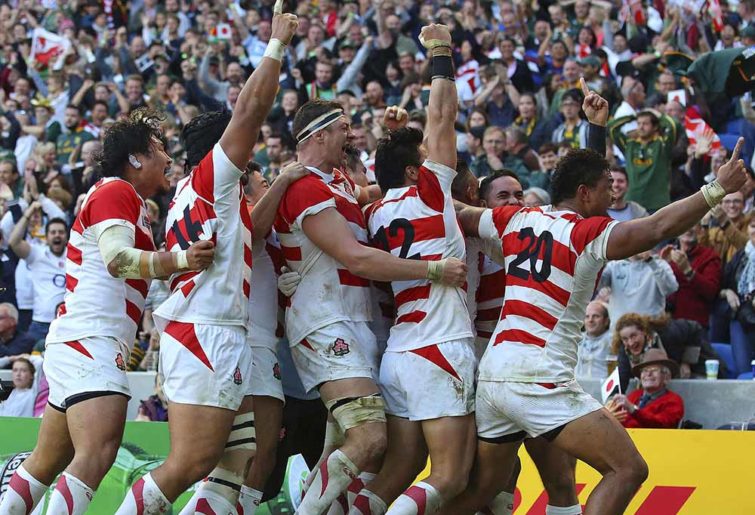The Roar's Super Rugby expert tips and predictions, Round 10: No love for Tahs, Crusaders and Rebels split the panel
The short weeks are done and dusted, with six more games in the regular season before we head into finals. The Crowd extended their…
There has been a bit of discussion and debate about the turnaround time between games at RWC 2019. So I thought I’d take a closer look.
The total rest days vary from 14 to 20. Traditionally, the host nation gets the most non-playing days and this tournament is no exception.
Out of the ten countries with the most rest days, seven are tier-one nations.
Of the 20 competing teams, 13 have one instance of a three-day turnaround between games: Argentina, England, Fiji, France, Georgia, Italy, NZ, Russia, South Africa, Scotland, Uruguay, USA and Wales. Of those 13 teams, eight are tier-one teams.
Three teams have one instance of a four-day turnaround: Canada, Ireland and Samoa. Four teams have one instance of eight days: England, Ireland, Russia and Scotland. One team has one instance of nine days between games: Wales. And two teams have one instance of ten days between games: France and NZ.
This is the total number of rest days each team enjoys.
| Number of rest days | Teams |
|---|---|
| 14 | Canada, South Africa, USA |
| 15 | Argentina, Fiji, Georgia, Samoa, Uruguay |
| 16 | Russia |
| 17 | Australia, England, Ireland, Italy, Wales |
| 18 | France, NZ, Nambia, Scotland, Tonga |
| 20 | Japan |
We can all appreciate the logistical nightmare that organising the pool matches must entail. That’s 20 teams playing 48 matches across 12 venues. And while the organisers try to ensure a modicum of equality between the rest days given to each team, the reality is that some nations get more. However, it doesn’t have to be this way.
During the RWC 2015, in an article for The Guardian, Robert Kitson suggested, “scheduling no fixtures on the first three days of any given week” as the way to solve the problem. There could be two games “on Thursday and Friday, four on Saturday and two more on Sunday”. This would ensure “at least six days between games” and would obviously be more equitable.
During the first week of RWC 2019, there was one game on Friday, three on Saturday, three on Sunday, one each on Monday, Tuesday and Wednesday and two on Thursday. That’s 12 games for the week.
While Kitson’s suggestion only accounts for ten games, if his idea was introduced and slightly adapted, the Monday to Wednesday games would’ve been dropped, an additional game played on Friday, and two more on Sunday. Surely this would have been easy to initiate.
But while Kitson’s logistics would work better for the teams, when he asked about it, a spokesman at World Rugby said that scheduling depended on “broadcasters frequently calling the tune”. After Japan’s 45-10 loss to Scotland four days after their 34-32 win over South Africa in 2015, Eddie Jones suggested that it probably wasn’t possible to “reproduce a performance like the one against the Boks with so little time available”. He admitted: “There should be a greater spread of fixtures” and that “The reason there isn’t is television”.

(Gareth Fuller/PA via AP, File)
Charlie Morgan’s article for The Telegraph explained that while the four-day turnaround “remain part of the Rugby World Cup schedule in 2019”, no tier-two nations “have been tasked with taking on two tier-one opponents with just three days’ rest separating the two matches”.
A WR spokesman said, “The schedule [had] been developed in partnership with teams” and had “been based on ‘collaboration and equity’ with input from key broadcasters, cities, venues, police and other core stakeholders”.
As Morgan asserts, it makes sense “for emerging nations to be placed in quieter slots with heavy-hitters at the weekends” but at least this time around, “these underdogs are being given a fairer chance at the sport’s showpiece”.
But this isn’t how everybody sees it. In an article for WalesOnline, Mark Orders discusses Canada’s plight of playing “all their fixtures with just 14 rest days”, even though both South Africa and the USA are in the exact same situation.
Obviously discussing South Africa wouldn’t fit the agenda of the article as he is trying to assert the unfairness of the competition, even though he is magnanimous enough to admit “things have undoubtedly improved for those outside the tier one bracket”.
Interestingly, the only country Orders actually calls out as having the maximum rest days is NZ, which is particularly interesting, especially when France has the exact same amount of rest days.
So, yes, unfortunately some teams do have it tougher than other teams, but let’s put it in perspective.
At the Women’s Rugby World Cup in 2017, each of the 12 teams only received three days between each of their three pool matches on August 9, 13 and 17. They then had five days turnaround before the semis on the 22nd and three non-playing days before the finals on August 26. So while the World Cup schedule is unfair for the men, it’s even more unfair for the women.
WR use the World Cup as a marketing tool to attract a new audience, therefore they want the premier teams on display at the peak times, so it’s safe to assume that the scheduling will always favour the top-ranked teams. But thankfully we’ve come a long way.